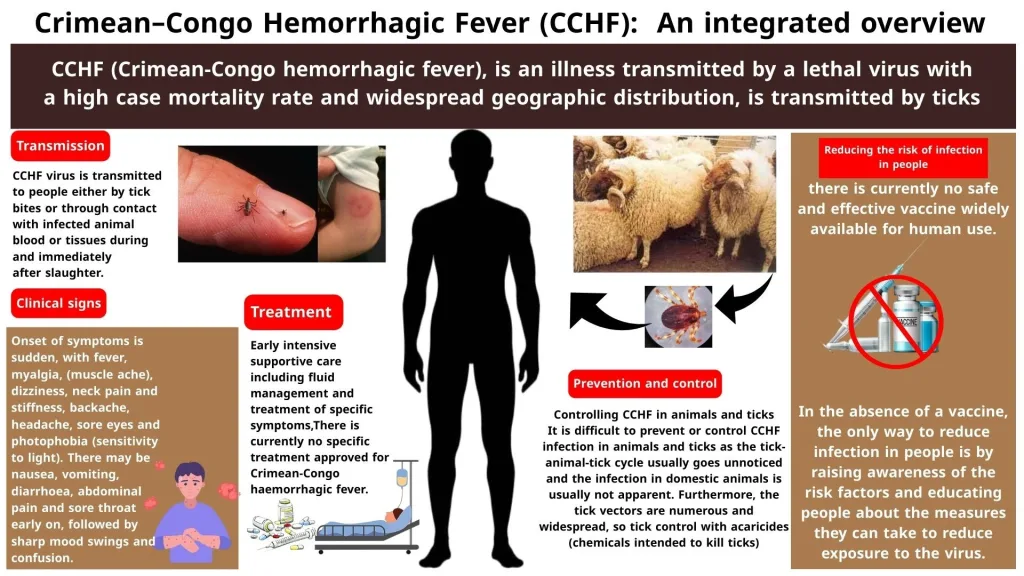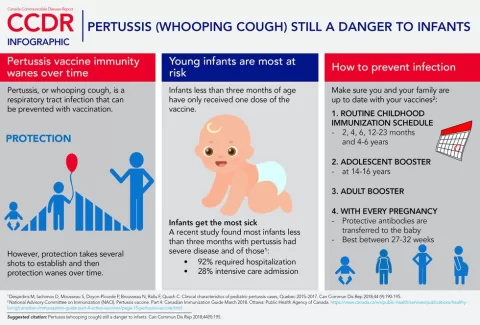Crimean-Congo Hemorrhagic Fever (CCHF) is an acute viral disease caused by the Crimean-Congo hemorrhagic fever virus (CCHFV), emerging as a critical public health threat across southwestern Europe. Transmitted primarily by Hyalomma ticks, CCHFV poses a significant risk due to its association with high mortality rates, particularly in human populations. The virus often circulates in wild animal reservoirs, with European rabbits being a notable species known to harbor immature tick stages that can facilitate transmission. Recent studies conducted in Portugal revealed concerning levels of CCHFV antibodies in rabbit populations, highlighting the need for extensive surveillance to mitigate this tick-borne virus. As global warming continues to affect tick habitats and populations, understanding the dynamics of CCHF in animal hosts is essential to prevent future outbreaks and safeguard public health.
The illness known as Crimean-Congo hemorrhagic fever is closely linked to a virus that is commonly spread through bites from infected ticks, particularly the Hyalomma genus. This disease manifests with severe symptoms and presents a serious risk to human health, positioning it as an urgent concern for health authorities in Europe. With certain animal populations, notably lagomorphs like the European rabbit, serving as hosts for immature tick larvae, the epidemiology of this tick-borne illness remains a critical topic of scientific inquiry. Observations indicate that the presence of CCHFV in these animal reservoirs may lead to increased viral circulation, thus enhancing the potential for outbreaks. Vigilant monitoring of such reservoirs is vital to understand and combat this emerging public health challenge effectively.
Understanding Crimean-Congo Hemorrhagic Fever Virus (CCHFV)
Crimean-Congo hemorrhagic fever virus (CCHFV) is a tick-borne virus that poses significant health risks to humans, primarily transmitted through the bites of infected ticks, particularly the *Hyalomma* genus. This virus is characterized by a high case-fatality rate, ranging from 30% to 50% in severe cases, making it a serious public health threat in many regions, including parts of southwest Europe. The virus was first identified in Crimea in the 1940s, and since then, it has spread globally, with notable outbreaks developing in Africa, Asia, and recently in European countries.
To effectively combat CCHFV, it is essential to understand its transmission dynamics and the ecological factors influencing its spread. Studies have shown that the virus can persist in animal reservoirs, specifically *Hyalomma* ticks, which maintain its life cycle through host animals like wild European rabbits. These lagomorphs play a crucial role in the epidemiology of CCHFV as they provide an ideal habitat for immature *Hyalomma* tick stages, enhancing the likelihood of viral circulation and potential human infection.
The Role of European Rabbits in CCHFV Transmission
European rabbits (*Oryctolagus cuniculus*) are significant hosts for immature *Hyalomma* ticks, which act as vectors for CCHFV. Previous research indicated that while these rabbits may harbor immature tick stages, there was limited evidence to confirm their exposure to the virus itself within European populations. This gap in knowledge prompted further investigation into the possible seroprevalence of CCHFV in wild rabbit populations in Portugal, a region increasingly affected by tick-borne diseases.
Through a comprehensive serological survey involving 667 rabbits, researchers discovered a modest prevalence of CCHFV antibodies, suggesting that these animals could potentially contribute to the virus’s ecology in the wild. The findings, showing varying concentrations of antibodies among different populations, underscore the importance of continuous monitoring and research on wildlife as a measure of public health risk and to better understand the dynamics of tick-borne viruses in Europe.
Impact of Hyalomma Ticks on Public Health
Hyalomma ticks are notorious for their ability to transmit several tick-borne pathogens, including CCHFV. Their geographic distribution has expanded in recent years, correlating with climate changes that favor the ticks’ proliferation and thus influencing the public health landscape. As temperatures rise, regions previously considered low-risk for tick exposure are experiencing surges in tick populations, increasing the likelihood of CCHFV spillover events to humans.
Due to their role as vectors, the control and management of *Hyalomma* tick populations are crucial for mitigating the risks associated with Crimean-Congo hemorrhagic fever. Public health authorities must consider integrated vector management strategies that include environmental management, community education, and surveillance programs tailored to monitor wildlife populations and their interactions with human populations. Such strategies are essential to safeguard public health and reduce transmission risks associated with tick-borne viruses.
Ecological Dynamics of CCHFV in Southwestern Europe
The ecological dynamics of CCHFV are deeply intertwined with the habitat and behaviors of wildlife hosts and vectors, particularly in southwestern Europe where environments support the populations of *Hyalomma* ticks and European rabbits. Understanding these dynamics is vital for predicting CCHFV circulation and potential outbreaks. Factors such as rabbit population density, habitat fragmentation, and climate conditions can influence the abundance of ticks and, subsequently, the risk of human exposure to CCHFV.
Research has shown that areas with high populations of European rabbits often correlate with increased tick abundance, providing ideal conditions for CCHFV transmission cycles. These ecological insights enable public health officials to devise more effective surveillance strategies targeting specific regions and populations where tick-borne viruses, including CCHFV, are likely to emerge, ensuring timely preventive measures are implemented.
Evolution of CCHFV in Wild Animal Reservoirs
The evolution of the Crimean-Congo hemorrhagic fever virus in wild animal reservoirs provides significant insights into its adaptability and the risk it poses to public health. Genomic studies on CCHFV have revealed considerable genetic diversity among strains circulating within different host species, particularly among tick populations. This diversity raises questions regarding the potential for emerging strains to evade existing immune responses in wildlife and humans, thus complicating efforts to manage outbreaks.
Understanding the evolutionary patterns of CCHFV is essential in preparing for future public health challenges. By monitoring genetic changes in the virus within its natural reservoirs, including European rabbits and *Hyalomma* ticks, scientists can identify critical changes that may increase virulence or transmissibility. Investments in genomic surveillance are vital to track these changes and ensure rapid responses to potential outbreaks in human populations.
CCHFV Surveillance in European Wildlife
Surveillance of CCHFV in wildlife is a critical component in preventing outbreaks among human populations. The use of serological surveys in wild species, particularly European rabbits, affords researchers the opportunity to assess the prevalence and distribution of CCHFV antibodies, contributing to a broader understanding of the virus’s epidemiology. Such initiatives highlight the interconnected relationship between wildlife health and human health, underscoring the significance of a One Health approach.
In Portugal, extensive monitoring programs have been set in place after the identification of CCHFV as a significant risk. These programs involve not only testing wild rabbit populations for antibodies but also assessing tick populations and their potential role as vectors. Regular surveillance allows for the timely identification of high-risk areas, facilitating data-driven decisions that inform public health strategies and educate communities on tick-borne diseases.
Impact of Climate Change on CCHFV Distribution
Climate change has far-reaching implications for the distribution and behavior of *Hyalomma* ticks, consequently affecting the ecology of CCHFV. As temperatures shift, tick habitats may expand into regions that were once unsuitable, creating new hotspots for tick-borne viruses. Understanding these shifts is crucial for forecasting future outbreaks of CCHFV in areas unaccustomed to tick presence and managing potential health risks associated with these changes.
The correlation between climate variability and the life cycle of ticks emphasizes the need for integrative research that bridges environmental science with public health demographics. As tick activity increases, communities and health authorities must remain vigilant and adapt their preventive measures accordingly, ensuring relevant education and awareness campaigns are targeted at high-risk populations, particularly in newly affected areas.
Public Awareness and Education on CCHFV
Raising public awareness about Crimean-Congo hemorrhagic fever and its transmission is essential for reducing the risk of infection and outbreaks. Education campaigns should focus on the importance of recognizing tick-borne diseases, understanding how to mitigate tick bites, and the significance of wildlife in the epidemiology of CCHFV. Public engagement can empower communities, particularly in agricultural and rural areas, where the risk of tick exposure is higher.
Moreover, health authorities must ensure that information regarding best practices for preventing tick bites and recognizing symptoms of tick-borne illnesses is widely available and accessible. Knowledge dissemination can significantly influence behavior change, leading to enhanced community resilience against the public health threat posed by CCHFV and other tick-borne pathogens.
Future Directions in CCHFV Research and Control
Future research on CCHFV must focus on the complex interplay between wildlife reservoirs, vectors, and the human environment. Continued investment in serological and genomic studies will enhance our understanding of how CCHFV evolves and spreads, enabling the development of highly targeted preventive strategies. Integrating multidisciplinary approaches, including ecology, virology, and public health, will be essential to construct a comprehensive management plan.
Moreover, potential vaccination strategies for at-risk populations need to be considered, alongside robust monitoring systems that can provide early warning of outbreaks. Additionally, fostering collaboration between wildlife biologists, health professionals, and policymakers will be pivotal in addressing the public health threat posed by CCHFV, aiming for effective control and management of tick-borne diseases in Europe.
Frequently Asked Questions
What is Crimean-Congo Hemorrhagic Fever (CCHF) and how is it transmitted?
Crimean-Congo Hemorrhagic Fever (CCHF) is a serious viral infection caused by Crimean-Congo Hemorrhagic Fever Virus (CCHFV), typically transmitted through tick bites, primarily by *Hyalomma ticks*. CCHF is recognized as a public health threat due to its high mortality rate.
How do European rabbits relate to the spread of Crimean-Congo Hemorrhagic Fever?
European rabbits (*Oryctolagus cuniculus*) are essential hosts for immature *Hyalomma lusitanicum* ticks, which are vectors for Crimean-Congo Hemorrhagic Fever Virus (CCHFV). The presence of these rabbits can influence the dynamics of CCHFV circulation.
What are the symptoms of Crimean-Congo Hemorrhagic Fever in humans?
Symptoms of Crimean-Congo Hemorrhagic Fever include high fever, muscle pain, dizziness, and severe bleeding, typically developing within 1-3 days of infection with Crimean-Congo Hemorrhagic Fever Virus (CCHFV). Prompt medical attention is crucial.
How is the public health threat assessed regarding Crimean-Congo Hemorrhagic Fever in Portugal?
The public health threat of Crimean-Congo Hemorrhagic Fever in Portugal is assessed through serologic surveys, studying animal populations such as European rabbits, and monitoring the presence of *Hyalomma* ticks that harbor the Crimean-Congo Hemorrhagic Fever Virus (CCHFV).
What role do tick-borne viruses play in Crimean-Congo Hemorrhagic Fever transmission?
Tick-borne viruses like Crimean-Congo Hemorrhagic Fever Virus (CCHFV) are transmitted through the bites of infected ticks. Understanding their ecology, including hosts like European rabbits and tick species such as *Hyalomma*, is crucial in managing and preventing outbreaks.
Why is the serologic survey of European rabbits important for understanding Crimean-Congo Hemorrhagic Fever?
Conducting serologic surveys in European rabbits is vital for understanding the dynamics of Crimean-Congo Hemorrhagic Fever Virus (CCHFV). This helps identify the extent of virus circulation and the role these rabbits play as reservoirs in the ecosystem.
Where has Crimean-Congo Hemorrhagic Fever Virus been detected in Europe?
Crimean-Congo Hemorrhagic Fever Virus (CCHFV) has been detected in southwestern Europe, particularly in Portugal and Spain, highlighting the region as a significant area of concern for this public health threat.
What measures can be taken to prevent Crimean-Congo Hemorrhagic Fever infection?
Preventive measures against Crimean-Congo Hemorrhagic Fever include avoiding tick-infested areas, using insect repellent, wearing protective clothing, and implementing surveillance and control programs for tick populations and wildlife hosts like European rabbits.
| Key Points |
|---|
| Crimean-Congo hemorrhagic fever virus (CCHFV) is a public health threat in southwestern Europe. |
| Study conducted on serum samples from 667 European rabbits in Portugal. |
| Low levels of CCHFV antibodies found, with a concentration of 5.77% in southern rabbit populations. |
| CCHFV is a tick-borne virus leading to severe hemorrhagic fever with a high fatality rate in humans. |
| *Hyalomma lusitanicum* ticks are identified as reservoirs and vectors of CCHFV. |
| Duration of viremia in mammals infected by tick bites is 2–10 days, aiding immune response development. |
| Serologic surveys are effective for monitoring CCHFV dynamics due to the immune response in infected hosts. |
| Wild European rabbits are key hosts for immature ticks and essential for understanding CCHFV epidemiology. |
| Previously inconclusive studies on natural CCHFV exposure in European lagomorphs spurred this research. |
Summary
Crimean-Congo Hemorrhagic Fever (CCHF) represents a significant public health concern, especially in southwestern Europe, where its vector, the *Hyalomma lusitanicum* tick, is prevalent. This research highlights the importance of European rabbits as hosts contributing to the circulation of CCHFV, demonstrating low antibody levels in populations and identifying critical dynamics for public health monitoring. Given the virus’s severe implications for human health, ongoing surveillance and research are essential to mitigate future outbreaks and understand the epidemiology of CCHF.
The content provided on this blog (e.g., symptom descriptions, health tips, or general advice) is for informational purposes only and is not a substitute for professional medical advice, diagnosis, or treatment. Always seek the guidance of your physician or other qualified healthcare provider with any questions you may have regarding a medical condition. Never disregard professional medical advice or delay seeking it because of something you have read on this website. If you believe you may have a medical emergency, call your doctor or emergency services immediately. Reliance on any information provided by this blog is solely at your own risk.








